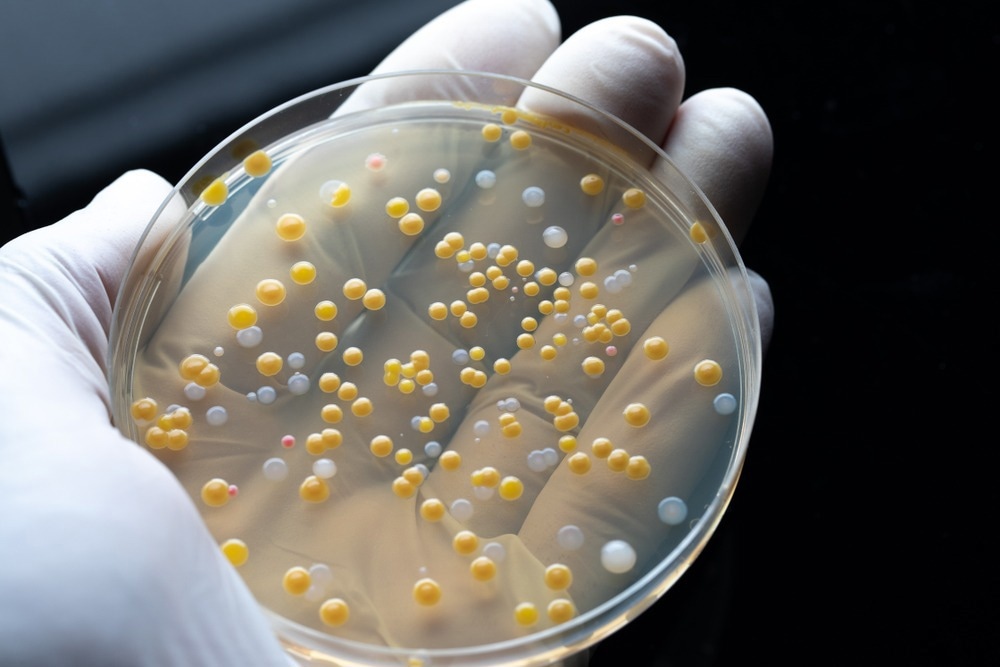A recent study reported in The Lancet Microbe reveals that the exchange of antibiotic resistance genes among diverse bacteria is significantly more extensive than previously believed.

Image Credit: sruilk/Shutterstock.com
Scientists from the Ineos Oxford Institute for Antimicrobial Research (IOI) at Oxford University and Fujian Agriculture and Forestry University in China have introduced a novel method known as culture-independent conjugation to investigate the transfer of plasmids among bacteria collected from hospital wastewater.
Plasmids, small circular segments of DNA, migrate between adjacent bacteria through a process called conjugation, involving a “donor” bacteria providing the plasmid and a “recipient” bacteria receiving it.
Plasmids containing antibiotic-resistance genes play a pivotal role in the emergence of antimicrobial resistance (AMR), including resistance to carbapenem, a crucial “last-resort” antibiotic. Carbapenem-resistant bacteria are estimated to cause 50,000 to 100,000 deaths globally each year.
Traditionally, conjugation has been primarily studied in pure cultures comprising a single bacterial species, limiting the comprehension of AMR dissemination in human, animal, and environmental bacterial communities.
The innovative culture-independent conjugation technique, developed over a period of more than five years, allows the assessment of conjugation in communities of mixed bacterial species, mimicking real-world environmental conditions.
This groundbreaking method is the first to model the transmission of multidrug-resistant plasmids using non-culture methods and can be easily applied to various aquatic or semi-aquatic samples. Plasmids are labeled with a gene encoding a fluorescent protein; recipient bacteria express the gene and can be isolated using a fluorescence-based sorting method.
The researchers focused on a plasmid called IncX3 (pX3_NDM-5), which carries carbapenem-resistance genes (NDM-5). Despite its global dominance, the spread of this plasmid between bacteria was poorly understood until now.
Using culture-independent conjugation, the researchers explored the transmission of pX3_NDM-5 plasmids among bacteria obtained from wastewater at a hospital in Fuzhou, China.
This research developed a novel method to further our understanding on the spread of AMR - where and how plasmids are shared between bacteria, particularly plasmids carrying clinically important antibiotic resistance genes. Future work will further examine environmental stressors including those associated with climate change and environmental pollution.”
Timothy Walsh, Professor and Director of Biology, Ineos Oxford Institute for Antimicrobial Research
The study revealed that this plasmid and others exhibited a much broader host range, spreading across various types of bacteria, including those unrelated. This included bacteria that are challenging to culture, suggesting that such microbes could serve as potential plasmid reservoirs, contributing to the dissemination of AMR.
These discoveries imply that the dissemination of resistance genes through plasmids is far more extensive than previously understood. This emphasizes the crucial significance of monitoring antimicrobial resistance (AMR) across environments, human populations, and animals.
Furthermore, these results challenge the widespread assumption that Gram-negative bacteria, which exhibit high antibiotic resistance, cannot easily transfer antibiotic-resistance genes to Gram-positive bacteria. This assumption was based on the belief that Gram-positive bacteria are more susceptible to antibiotic treatments.
Additionally, the study investigated the impact of environmental stressors on plasmid transfer, revealing that chlorine can alter plasmid conjugation. As chlorine is a widely used hospital disinfectant that enters hospital wastewater systems, this underscores the necessity of reevaluating the use of such disinfectants amidst the growing concern of antimicrobial resistance (AMR).
Co-author Professor Timothy Walsh, Director of Biology at the IOI stated, “We know that overuse and misuse of antibiotics in humans contributes to antimicrobial resistance. This study proves that AMR is being spread in the environment around us, not just hospitals and clinics. People, animals, and ecosystems are interconnected around the world, therefore there is an urgent need to use more creative approaches to understand the dynamics of rising bacterial resistance to our last–resort antibiotics.”
This research can be applied to other plasmids carrying resistance genes – it is very likely plasmids thought to have a narrow host range can in fact be spread between lots of different bacteria. Research exploring the host range of multidrug resistant plasmids is urgently needed to prevent the growing burden of drug-resistance globally.”
Qiu Yang, Professor, Fujian Agriculture and Forestry University
Source:
Journal reference:
Yang, Q. E., et al. (2023) Interphylum dissemination of NDM-5-positive plasmids in hospital wastewater from Fuzhou, China: a single-centre, culture-independent, plasmid transmission study. The Lancet. doi.org/10.1016/S2666-5247(23)00227-6